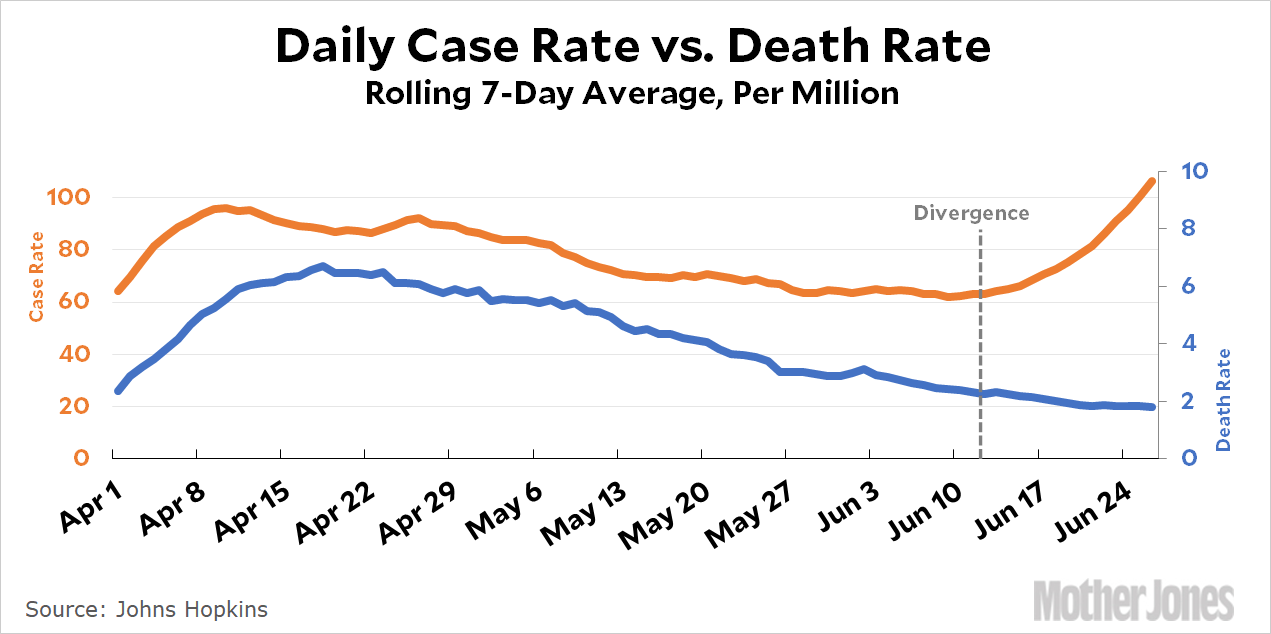This chart shows the growth trend of COVID-19 cases vs. COVID-19 deaths:

Cases and deaths were following a roughly similar trend until mid June, when cases suddenly started to skyrocket while deaths continued to steadily decline. What’s going on?
Part of the answer, of course, is that deaths are a lagging indicator, and you don’t really expect them to increase until cases have been high for two or three weeks. It’s possible that the death rate will turn upward next week.
But there are a couple of other things that probably explain what’s going on. First, during the initial outbreak of COVID-19 a huge number of cases came in nursing homes, whose residents are by far the most vulnerable to the virus. We now know that nearly half of all COVID-19 deaths came in nursing homes, which eventually created a sort of herd immunity. Starting around June, there were fewer cases and far fewer deaths in nursing homes.
Second, when states started to reopen, it was young people who took advantage of this in the greatest numbers, while older people like me mostly tried to stay isolated. The kids tended not to wear masks or pay a lot of attention to social distancing measures, and this caused the number of cases to skyrocket. However, young people are also the least likely to die from the virus, so the large number of cases among the young haven’t translated into a large number of deaths.
Both of these together—more cases among young people and fewer cases in nursing homes—have combined to change the age profile of the coronavirus. As that age profile goes down, there are fewer deaths even as cases rise, simply because younger people are much less likely to die from COVID-19 than older people.
This probably explains some of the mystery. But don’t get complacent: Next week might very well see a turnaround in the death rate. A lower age profile can improve things, but not forever. At some point, reckless behavior will catch up to us.













